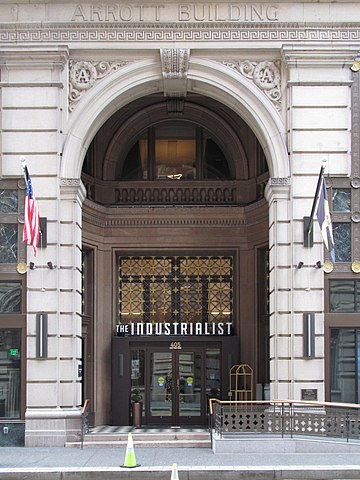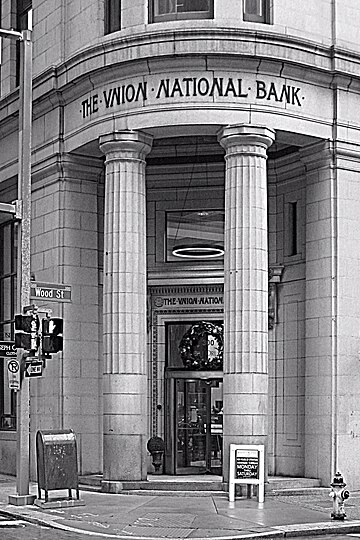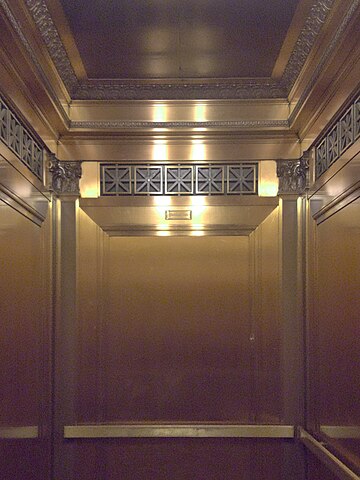
After much expensive restoration and renovation, the Arrott Building (designed by Frederick Osterling) has reopened as a hotel called “The Industrialist.” The exquisite lobby has been carefully preserved. The picture above is huge, stitched together from several photographs to make what may be the only complete head-on picture of the Wood Street façade of the building on the internet.
















